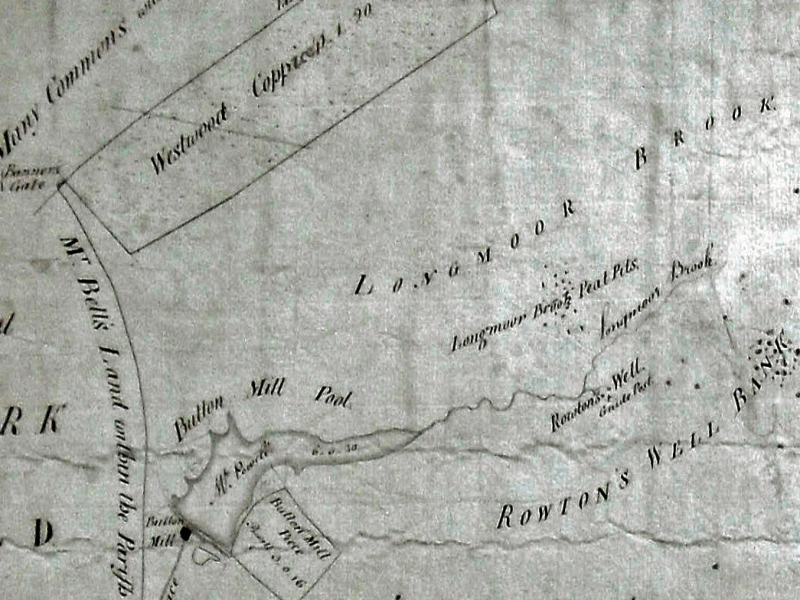Longmoor Valley in Sutton Park extends from the dam of Longmoor Pool up to the golf course, and is described as having a broad valley floor bounded by rising ground. Most of the valley floor was waterlogged marsh and bog, and in places the mossy vegetation had decayed over the centuries to form a thick layer of peat. In 1762 an author calling himself “Incola” wrote “The Park also furnishes some fuel for the poor inhabitants, from a vast magazine of peat near the Roman Road”. There is no reference to getting peat for fuel in earlier records, but the practice must have been well established, as an eighteenth century court ordered “all who get peat in Longmoor Slade are to keep within bounds, and not lay their peats to dry within the said bounds”. Locally, the term “Slade” seems to refer to a valley with no watercourse, such as Gumslade or the defile at Slade Road, so perhaps there was no defined watercourse through the waterlogged ground at one time.
A map of Sutton Park made in 1779 shows the Longmoor Peat Pits opposite Rowtons Well, an area still referred to as the old peat pit. Access to the peat pits was along two uncut banks, still to be seen.
Zachariah Twamley, in his unpublished history of Sutton written in 1855, noted “Also, (there is another stream) on the south-west side of the Park, first arising from a spring and running easterly through a morass or bog; which has been drained, by order of the Court of Chancery, in the year 1823, formed into a pool within the park, about fourteen acres, named Longmoor Mill Pool.” The work of draining the valley reduced the ability of the peat to absorb the rainfall of very heavy storms, which now went flooding down to the pool and overflowing the dam. The dam had to be repaired in 1824 and again in 1831 because of flood damage.
Longmoor Pool was made in 1734, to precise specifications. John Riland and John Gibbons paid seven pounds to their contractor William Rawlins to make the dam, using turf and gravel from a small quarry at the eastern end of the dam. Eleven feet high at its highest point, the base of the dam was to be ten yards broad with a five-yard breadth at the top. The dam was fifty yards long, and “a trough for releasing the water” (probably the weakest point) would be provided by Riland and Gibbons. This substantial earthwork, which seemed more than adequate to withstand all weathers, was nevertheless breached on a number of occasions by the elemental power of flood waters, even after the extensive strengthening it received in the nineteenth century. On the fourteenth of July 1923 Longmoor Pool dam burst after a heavy downpour, and the resulting floodwaters swamped the basements of the Parade shops.
